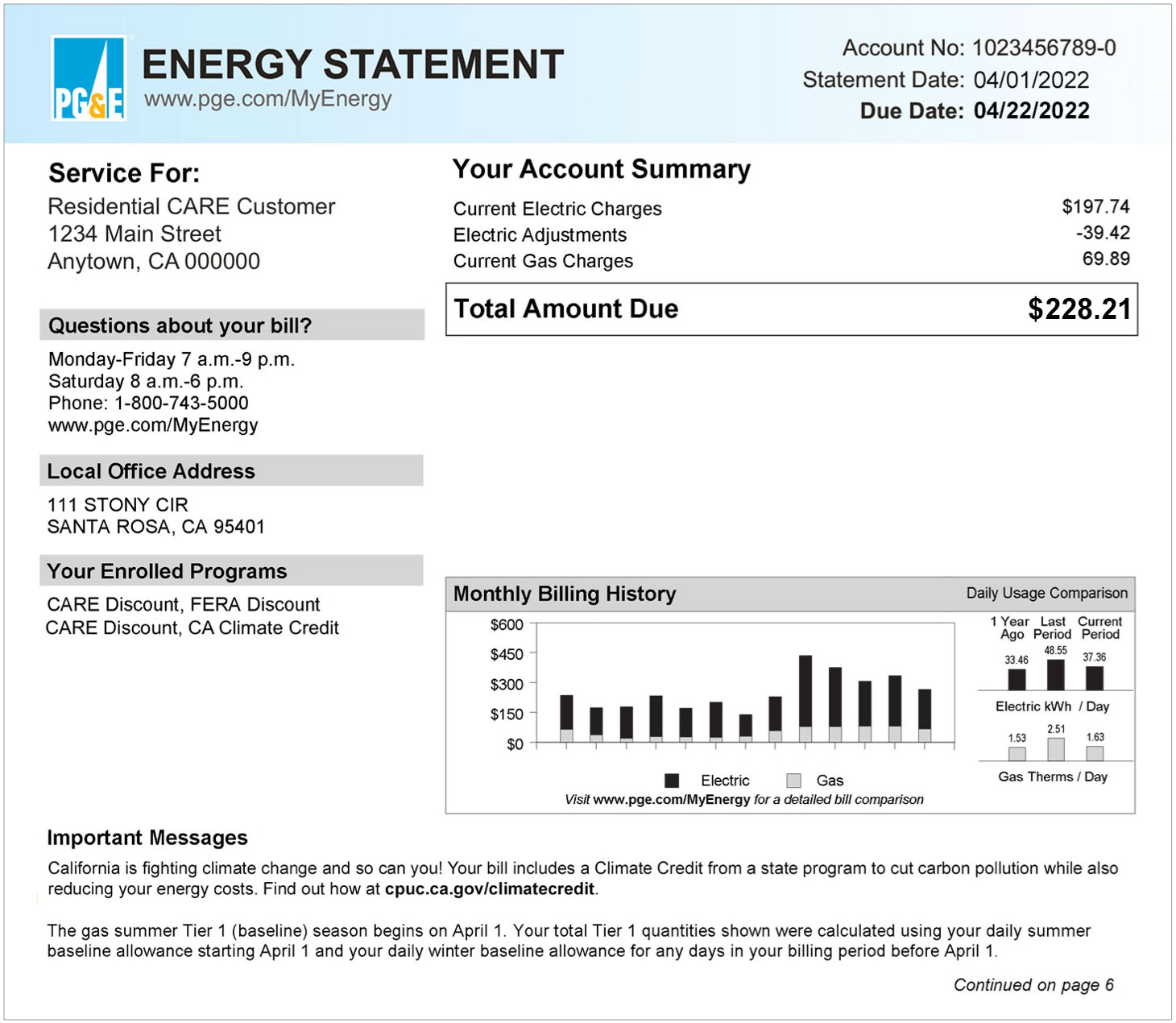

Finance
How To Fix Bad Bookkeeping
Modified: December 30, 2023
Learn the step-by-step process of fixing bad bookkeeping and improving your financial records with our comprehensive guide. Enhance your finance management skills today!
(Many of the links in this article redirect to a specific reviewed product. Your purchase of these products through affiliate links helps to generate commission for LiveWell, at no extra cost. Learn more)
Table of Contents
- Introduction
- Common Mistakes in Bookkeeping
- Assessing the Scale of the Problem
- Identifying Errors and Discrepancies
- Reconciling Bank Statements
- Correcting Transaction Recording Errors
- Improving Organization and Documentation
- Implementing Efficient Bookkeeping Systems
- Utilizing Bookkeeping Software
- Seeking Professional Help
- Conclusion
Introduction
Effective bookkeeping is the backbone of any successful business. It involves accurately recording financial transactions, tracking income and expenses, and maintaining organized financial records. However, even the most diligent business owners can make mistakes or fall behind on their bookkeeping tasks, leading to inaccurate financial information and potential complications.
Bad bookkeeping can have severe consequences for a business. It can make it difficult to assess the financial health of the company, inhibit decision-making, hinder tax preparation, and even result in legal issues. Therefore, it is crucial to identify and fix bad bookkeeping practices as soon as possible to ensure the long-term success of your business.
In this article, we will explore common mistakes in bookkeeping, provide guidance on how to assess the scale of the problem, and offer practical tips to help you identify and rectify errors and discrepancies in your financial records. We will also discuss the importance of improving organization and documentation, implementing efficient bookkeeping systems, and utilizing bookkeeping software. Lastly, we will explore the option of seeking professional help when necessary.
Remember, good bookkeeping is not just about compliance; it is also a valuable tool for monitoring the financial health of your business and making informed decisions. Let’s dive in and learn how to fix bad bookkeeping practices and set your business on the path to financial success.
Common Mistakes in Bookkeeping
Bookkeeping mistakes can happen to anyone, especially if they don’t have a strong background in accounting or financial management. These errors can range from minor oversights to significant discrepancies that can have a lasting impact on the financial health of your business. Here are some common mistakes to watch out for:
- Inconsistent tracking of income and expenses: Failing to record all income and expenses accurately and in a timely manner can lead to inaccurate financial statements. It’s essential to diligently track every transaction, whether it’s a sale, purchase, or expense.
- Failure to reconcile bank statements: Neglecting to reconcile your bank statements with your internal records can result in discrepancies and make it challenging to identify and rectify errors. Regularly comparing your bank statements to your accounting records is crucial to maintain accuracy.
- Incorrect classification of transactions: Misclassifying transactions can distort your financial reports and hinder your ability to make informed decisions. Ensure that each transaction is properly categorized based on its nature (e.g., revenue, expense, asset, liability) to accurately reflect your financial picture.
- Lack of documentation: Insufficient documentation of financial transactions can make it difficult to verify the accuracy of your records and defend them during audits or legal proceedings. Make it a habit to retain invoices, receipts, and other supporting documents for every transaction.
- Failure to record cash transactions: Cash transactions are often overlooked or mistakenly omitted from financial records. Ensure that all cash transactions, no matter how small, are properly recorded to maintain an accurate representation of your business’s finances.
- Ignoring accounts receivable and accounts payable: Neglecting to track outstanding invoices or unpaid bills can result in cash flow problems and strained relationships with customers and suppliers. Regularly monitor and follow up on accounts receivable and accounts payable to maintain healthy cash flow.
- Overlooking tax obligations: Failing to keep up with tax obligations, such as filing accurate tax returns and remitting payments on time, can lead to penalties and legal issues. Stay informed about your tax responsibilities and ensure compliance with applicable tax regulations.
These are just a few examples of common bookkeeping mistakes, but there are many others. It’s crucial to be vigilant and proactive in identifying and rectifying these errors to maintain accurate financial records and make informed business decisions.
Assessing the Scale of the Problem
Once you’ve identified common bookkeeping mistakes in your records, it’s important to assess the scale of the problem to prioritize and address the most critical issues. Here are some steps to help you evaluate the extent of the bookkeeping problems:
- Review financial statements: Start by reviewing your financial statements, such as balance sheets, income statements, and cash flow statements. Look for any significant discrepancies or irregularities that might indicate mistakes or inaccuracies in your bookkeeping.
- Analyze revenue and expense trends: Dive deeper into your revenue and expense data to identify any unusual patterns or inconsistencies. This analysis can help you pinpoint specific areas where errors may have occurred, such as duplicate entries or missing transactions.
- Check for outstanding payments or receivables: Review your accounts payable and accounts receivable to identify any outstanding payments or overdue invoices. This will give you a sense of your cash flow situation and whether there are any potential issues in tracking and managing these transactions.
- Verify bank reconciliations: Ensure that your bank reconciliations are up-to-date and accurate. Compare your bank statements with your internal records to check for any discrepancies or errors that need to be addressed.
- Assess the impact on financial decision-making: Consider how the bookkeeping mistakes may have influenced your financial decision-making process. Did you make any incorrect assumptions or judgments based on inaccurate or incomplete information? Look for areas where you might have made suboptimal decisions and prioritize correcting those issues.
By systematically assessing the scale of the bookkeeping problems, you can gain a clearer understanding of the specific areas that need attention and prioritize your efforts accordingly. It’s important to remember that every business is unique, and the extent of the bookkeeping problems may vary. However, by conducting a thorough assessment, you can lay the foundation for effectively identifying and rectifying the mistakes.
Identifying Errors and Discrepancies
Once you have assessed the scale of the bookkeeping problems, the next step is to identify specific errors and discrepancies in your financial records. This process requires careful examination and scrutiny of your transactions and documentation. Here are some steps to help you identify and rectify errors:
- Review transaction records: Go through each transaction recorded in your books and compare them with supporting documentation such as invoices, receipts, bank statements, and credit card statements. Check for any discrepancies or missing entries.
- Check for data entry errors: Data entry errors are common in bookkeeping, ranging from simple typos to transposing numbers. Carefully review the data entered into your accounting system and verify its accuracy against the source documents.
- Look for duplicate entries: Duplicate entries can occur when the same transaction is recorded multiple times, inflating revenue or expenses. Use your accounting software’s search function to identify any duplicates and delete or correct them.
- Verify accuracy of categorization: Ensure that transactions are properly categorized based on their nature (revenue, expense, asset, liability) and accurately reflect their purpose. Misclassifications can distort financial reports and hinder analysis.
- Reconcile bank and credit card statements: Compare your bank and credit card statements with your accounting records to identify any discrepancies. Look for missing transactions, unrecorded deposits or withdrawals, and any discrepancies in amounts.
- Examine inventory records: If your business involves inventory, carefully review your inventory records to ensure that they match physical inventory counts. Look for any discrepancies that may impact the accuracy of your financial statements.
- Consider external factors: Sometimes, errors or discrepancies may be caused by external factors such as bank errors or delays in processing transactions. If you notice any inconsistencies, reach out to the relevant parties to investigate and resolve the issue.
Identifying errors and discrepancies in your bookkeeping can be a meticulous process, but it is essential to maintain accurate financial records. By diligently reviewing your transactions, verifying data accuracy, and reconciling statements, you can effectively identify and rectify any mistakes or inconsistencies in your records.
Reconciling Bank Statements
Reconciling your bank statements with your accounting records is crucial to ensure the accuracy of your financial information. This process involves comparing the transactions recorded in your books with the transactions reflected in your bank statements. Here are the steps to effectively reconcile your bank statements:
- Gather your bank statements: Collect your bank statements for the relevant period and ensure that they are complete and accurate.
- Compare opening and closing balances: Start by comparing the opening and closing balances on your bank statement with the corresponding balances in your accounting records. Any discrepancies should be investigated.
- Identify outstanding checks and deposits: Check your bank statement for any outstanding checks that have not cleared and any deposits that have not been credited to your account. Ensure that these transactions are recorded accurately in your books.
- Check for bank errors: Banks can make errors, such as recording transactions incorrectly or charging fees erroneously. Review your bank statement carefully to identify any discrepancies caused by the bank and contact them to rectify the issue.
- Review recorded transactions: Compare each transaction listed on your bank statement with the corresponding transaction in your accounting records. Ensure that the amounts and descriptions match and that all transactions are accounted for.
- Investigate and reconcile discrepancies: If you find discrepancies between your bank statement and your accounting records, investigate the cause of the differences. Possible reasons for discrepancies include data entry errors, missing transactions, or bank fees not accounted for. Take the necessary steps to reconcile these discrepancies.
- Make adjustments if needed: Based on your reconciliation, make any necessary adjustments in your accounting records to ensure that they match your bank statement.
- Document your reconciliation: Keep a record of the steps you took to reconcile your bank statement, including any adjustments made. This documentation will help you in case of future audits or inquiries.
Regularly reconciling your bank statements is essential to ensure the accuracy of your financial records. It allows you to identify any discrepancies, correct errors, and maintain the integrity of your accounting system. By following these steps, you can effectively reconcile your bank statements and have confidence in the accuracy of your financial information.
Correcting Transaction Recording Errors
Transaction recording errors can occur due to various reasons, such as data entry mistakes, misclassifications, or missing entries. It’s crucial to correct these errors promptly to ensure accurate financial records. Here’s how you can address transaction recording errors:
- Identify the errors: Review your financial records, bank statements, and supporting documentation to identify any transaction recording errors. Look for missing transactions, duplicate entries, incorrect amounts, or misclassified transactions.
- Data entry corrections: If the error is a result of data entry, correct the mistake by entering the correct information into your accounting system. Double-check the accuracy of the entered data before saving the changes.
- Duplicate entry removal: If you discover duplicate entries, delete or void the duplicate transactions in your accounting system to eliminate any impact on your financial reports.
- Adjusting misclassified transactions: If a transaction is incorrectly categorized, update the classification to the appropriate category. Ensure that it accurately reflects the nature of the transaction and its impact on your financial statements.
- Recording missing transactions: If you identify any missing transactions, record them in your accounting system. Make sure to include all necessary details such as the date, amount, description, and relevant accounts.
- Reconciling bank and credit card statements: If the errors are identified during the reconciliation process, make the necessary adjustments to ensure that your accounting records match the bank or credit card statements.
- Documenting corrections: Keep a record of the errors discovered and the steps taken to correct them. Maintain proper documentation that includes the date, description of the error, correction made, and any supporting evidence.
- Ensure consistency moving forward: Implement measures to prevent future transaction recording errors. This may include providing training to staff responsible for data entry, implementing quality control checks, or utilizing accounting software features that can help reduce errors.
It’s important to address transaction recording errors promptly to maintain accurate financial records. Regularly review your records, be diligent in data entry, and perform regular reconciliations to catch any errors early on. By implementing these corrective measures and maintaining vigilance, you can ensure the integrity of your financial data and make informed business decisions based on accurate information.
Improving Organization and Documentation
Organizing your financial records and maintaining proper documentation is crucial for effective bookkeeping. It not only helps you stay organized but also allows for easier identification of errors, supports decision-making, and ensures compliance with legal and tax requirements. Here are some strategies to improve organization and documentation in your bookkeeping practices:
- Create a system: Establish a clear and consistent system for organizing your financial records. Set up folders or electronic storage systems to categorize and store documents such as invoices, receipts, bank statements, and tax documents.
- Standardize naming conventions: Develop a naming convention for your documents that is logical and consistent. This will make it easier to locate specific files when needed.
- Document every transaction: Ensure that you have a record of every financial transaction, both incoming and outgoing. This includes recording cash transactions, checks, bank transfers, and credit card payments.
- Keep track of supporting documentation: Maintain organized records of invoices, receipts, purchase orders, and any other relevant documents that support your financial transactions. This documentation serves as evidence and helps validate the accuracy of your records.
- Utilize technology: Consider using bookkeeping software or cloud-based accounting systems that allow for easy organization, storage, and retrieval of financial records. These tools can automate many bookkeeping tasks, reducing the chances of errors and improving efficiency.
- Regularly back up data: Implement a system for regular data backups to protect your financial records from loss or damage. Back up your data to external hard drives, cloud storage services, or secure servers.
- Establish document retention policies: Develop policies for how long you will retain financial records, keeping in mind legal and tax requirements. Determine which documents should be retained for a specified period and which can be securely disposed of after that timeframe.
- Train and educate staff: Provide training to your bookkeeping staff on proper organization and documentation practices. Educate them on the importance of accuracy, consistency, and compliance with relevant regulations.
- Conduct regular audits: Periodically review and audit your financial records to ensure that they are complete, accurate, and compliant with accounting standards and regulations.
Improving organization and documentation in your bookkeeping practices will save you time and effort, minimize errors, and contribute to the overall efficiency and effectiveness of your financial management. By implementing these strategies, you can maintain well-organized financial records that support the growth and success of your business.
Implementing Efficient Bookkeeping Systems
Efficient bookkeeping systems are essential for maintaining accurate financial records, ensuring timely reporting, and facilitating decision-making. Implementing an efficient bookkeeping system can streamline your processes, reduce errors, and provide you with a clear and up-to-date picture of your business’s financial health. Here are some strategies to help you implement an efficient bookkeeping system:
- Choose the right accounting software: Invest in a reliable accounting software that suits the needs of your business. Look for features such as automated data entry, bank reconciliation, financial report generation, and tax preparation capabilities.
- Set up a chart of accounts: Create a well-organized and comprehensive chart of accounts that reflects the specific financial needs and structure of your business. This will make it easier to categorize and track transactions accurately.
- Establish a standardized workflow: Develop a standardized workflow that outlines the steps and responsibilities for recording and processing financial transactions. This will ensure consistency and efficiency in your bookkeeping processes.
- Automate recurring transactions: Utilize automation features in your accounting software to automate recurring transactions such as monthly bills, payroll, and loan payments. This can save time and reduce the chances of errors.
- Implement internal controls: Put in place internal controls to safeguard your financial information and prevent fraud. This can include authorization protocols for financial transactions, separation of duties, and regular internal audits.
- Use cloud-based solutions: Consider using cloud-based bookkeeping solutions that allow for easy access and collaboration, especially if you have multiple team members or remote workers. Cloud-based systems also offer data backup and enhanced security measures.
- Integrate with other systems: Integrate your accounting software with other business systems such as customer relationship management (CRM) or inventory management software. This integration can streamline data exchange and ensure consistency across different processes.
- Regularly reconcile accounts: Perform regular bank and credit card reconciliations to ensure that your accounting records match your financial institution statements. This helps identify errors and maintain the accuracy of your financial data.
- Utilize reports for analysis: Leverage the reporting features of your accounting software to generate financial reports that provide valuable insights into your business’s performance. Analyze these reports to make informed decisions and identify areas for improvement.
- Stay updated with regulations: Stay informed about relevant accounting regulations and tax laws to ensure compliance. Regularly review and adjust your bookkeeping processes to align with any changes in regulations.
Implementing efficient bookkeeping systems is a crucial step towards maintaining accurate financial records and making informed business decisions. By following these strategies and leveraging the power of technology, you can streamline your bookkeeping processes, improve efficiency, and focus on growing your business.
Utilizing Bookkeeping Software
Bookkeeping software is a valuable tool that can greatly simplify and streamline your financial management processes. By utilizing bookkeeping software, you can improve accuracy, save time, and gain valuable insights into your business’s financial health. Here are some ways to effectively utilize bookkeeping software:
- Select the right software: Choose bookkeeping software that aligns with your business’s needs and size. Consider factors such as ease of use, scalability, reporting capabilities, and integration options with other systems.
- Automate data entry: Utilize automation features to import bank and credit card transactions directly into your software, reducing the need for manual data entry. This not only saves time but also minimizes the chances of errors or omissions.
- Set up regular backups: Ensure that you have a robust backup system in place to protect your financial data. Schedule regular backups to an external drive or the cloud to safeguard against data loss.
- Utilize bank reconciliation features: Take advantage of the bank reconciliation features offered by your software to reconcile your bank and credit card statements with your accounting records. This helps identify any discrepancies and ensures the accuracy of your financial data.
- Create customizable reports: Generate customized financial reports that provide you with insights into various aspects of your business’s finances. Tailor the reports to meet your specific needs and preferences.
- Track accounts payable and receivable: Use the software’s features to track and manage outstanding invoices and bills. This ensures that you stay on top of payments and collections, improving cash flow management.
- Monitor expense and income categories: Track your expenses and income categories within the software to gain a clear picture of where your money is coming from and where it is going. This allows for better budgeting and cost control.
- Stay up to date with tax obligations: Enable tax features in your software to ensure compliance with tax laws. Keep track of relevant tax rates, deductions, and deadlines to simplify tax preparation and minimize the risk of penalties.
- Integrate with other systems: If applicable, integrate your bookkeeping software with other systems such as inventory management, payroll, or e-commerce platforms. This integration allows for seamless data flow and reduces the need for manual data entry.
- Train and educate employees: Provide training to your employees on how to effectively use the bookkeeping software. Ensure that they are familiar with its features and understand the importance of accurately entering and maintaining financial data.
By effectively utilizing bookkeeping software, you can streamline your financial management processes, improve accuracy, and gain valuable insights into your business’s financial performance. Take full advantage of the features and capabilities offered by your software to enhance your bookkeeping practices and enable informed decision-making.
Seeking Professional Help
While implementing efficient bookkeeping practices is essential, there are instances where seeking professional help becomes necessary. Professional bookkeepers and accountants can provide expertise, guidance, and support to ensure the accuracy and compliance of your financial records. Here are situations where seeking professional help can be beneficial:
- Complex financial transactions: If your business involves intricate financial transactions such as mergers, acquisitions, or international transactions, seeking professional help can ensure that these complexities are properly dealt with and accurately reflected in your bookkeeping records.
- Changes in tax laws and regulations: Tax laws and regulations are constantly evolving. To navigate these changes and ensure compliance, consulting with a tax professional can provide valuable insights and help optimize your tax strategy.
- Financial planning and forecasting: If you need assistance with financial planning, budgeting, or forecasting, an experienced financial professional can help analyze your financial data, identify trends, and provide strategic recommendations.
- Audit and compliance: If your business is subject to audits or requires adherence to specific compliance standards, hiring an experienced professional can ensure that your financial records are properly prepared and can withstand scrutiny.
- Time constraints: If managing your bookkeeping tasks becomes overwhelming and time-consuming, delegating these responsibilities to a professional allows you to focus on other critical aspects of your business.
- Restoring damaged or incomplete records: If you discover significant errors or gaps in your financial records, a professional bookkeeper or accountant can help restore and reconstruct the data, ensuring accuracy and completeness.
- Financial analysis and reporting: Professionals can assist in analyzing your financial data, generating meaningful reports, and providing insights that help you make informed business decisions.
- Training and support: Professionals can provide training and ongoing support to you and your staff on bookkeeping best practices, ensuring that you have the necessary knowledge and tools to maintain accurate financial records.
When deciding to seek professional help, consider factors such as the nature and complexity of your business, your budget, and the qualifications and expertise of the professionals you engage with. Working closely with professionals can bring immense value to your business by ensuring accurate financial records, optimizing tax strategies, and providing valuable insights for informed decision-making.
Conclusion
Maintaining accurate and efficient bookkeeping practices is crucial for the financial health and success of any business. By avoiding common bookkeeping mistakes, assessing the scale of potential problems, and identifying errors and discrepancies, you can ensure the integrity of your financial records. Reconciling bank statements, correcting transaction recording errors, and improving organization and documentation are important steps in establishing a solid foundation for your bookkeeping processes. Furthermore, implementing efficient bookkeeping systems and utilizing bookkeeping software can streamline operations, save time, and provide valuable insights into your business’s financial performance.
However, it’s important to recognize that bookkeeping can be complex and time-consuming. In cases where expertise is needed, seeking professional help from bookkeepers, accountants, or financial consultants can provide invaluable support and guidance. They can assist with tasks such as tax compliance, financial planning and forecasting, and navigating complex financial transactions.
Remember, accurate financial records serve as a financial compass for your business. They enable you to make informed decisions, satisfy legal and tax obligations, and better understand your business’s financial position. By prioritizing and effectively managing your bookkeeping practices, you can lay the groundwork for long-term success and ensure that your business maintains a strong financial foundation.














